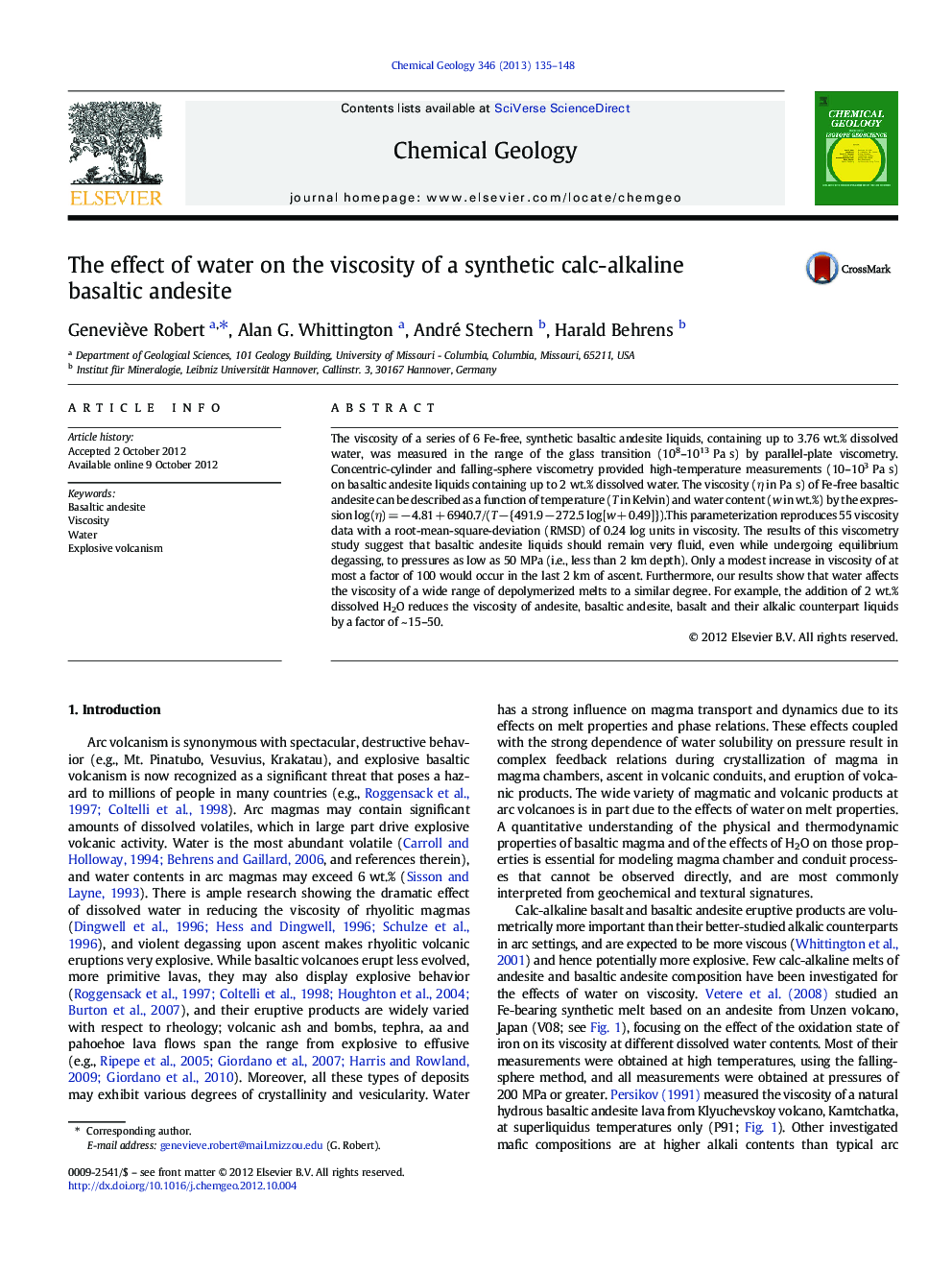| Article ID | Journal | Published Year | Pages | File Type |
|---|---|---|---|---|
| 4699018 | Chemical Geology | 2013 | 14 Pages |
The viscosity of a series of 6 Fe-free, synthetic basaltic andesite liquids, containing up to 3.76 wt.% dissolved water, was measured in the range of the glass transition (108–1013 Pa s) by parallel-plate viscometry. Concentric-cylinder and falling-sphere viscometry provided high-temperature measurements (10–103 Pa s) on basaltic andesite liquids containing up to 2 wt.% dissolved water. The viscosity (η in Pa s) of Fe-free basaltic andesite can be described as a function of temperature (T in Kelvin) and water content (w in wt.%) by the expression log(η) = − 4.81 + 6940.7/(T − {491.9 − 272.5 log[w + 0.49]}).This parameterization reproduces 55 viscosity data with a root-mean-square-deviation (RMSD) of 0.24 log units in viscosity. The results of this viscometry study suggest that basaltic andesite liquids should remain very fluid, even while undergoing equilibrium degassing, to pressures as low as 50 MPa (i.e., less than 2 km depth). Only a modest increase in viscosity of at most a factor of 100 would occur in the last 2 km of ascent. Furthermore, our results show that water affects the viscosity of a wide range of depolymerized melts to a similar degree. For example, the addition of 2 wt.% dissolved H2O reduces the viscosity of andesite, basaltic andesite, basalt and their alkalic counterpart liquids by a factor of ~ 15–50.
► We measured the viscosity of Fe-free, hydrous calc-alkaline basaltic andesite liquids. ► Dissolved water reduces the viscosity of calc-alkaline basaltic andesite liquid. ► Water degassing at high temperatures results in only a modest increase in viscosity. ► Water affects the viscosity of many depolymerized melts to a similar degree.
